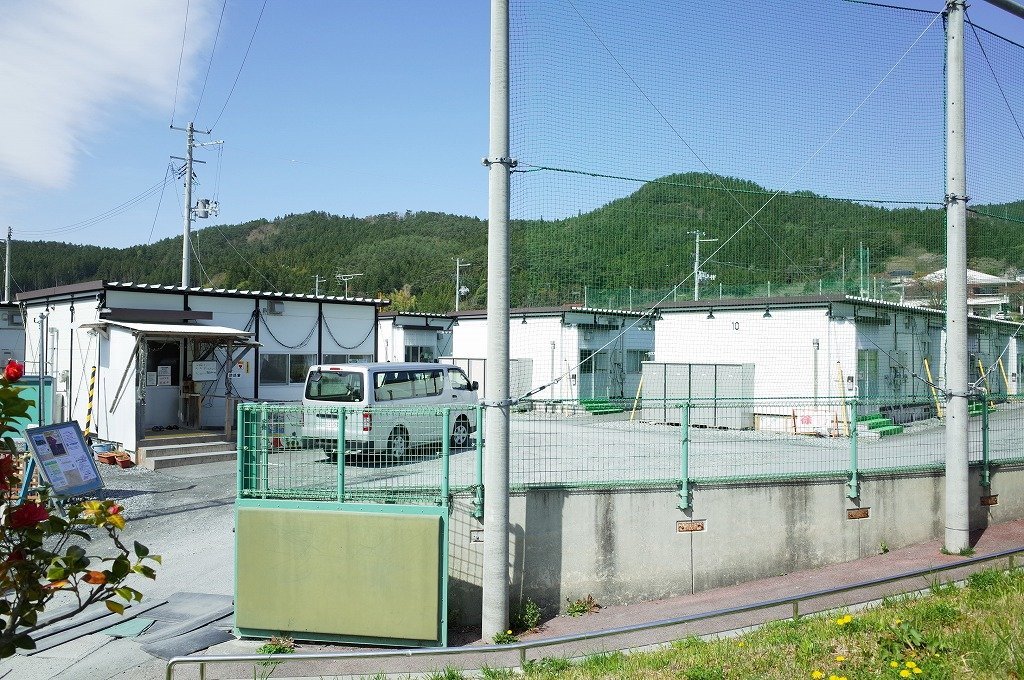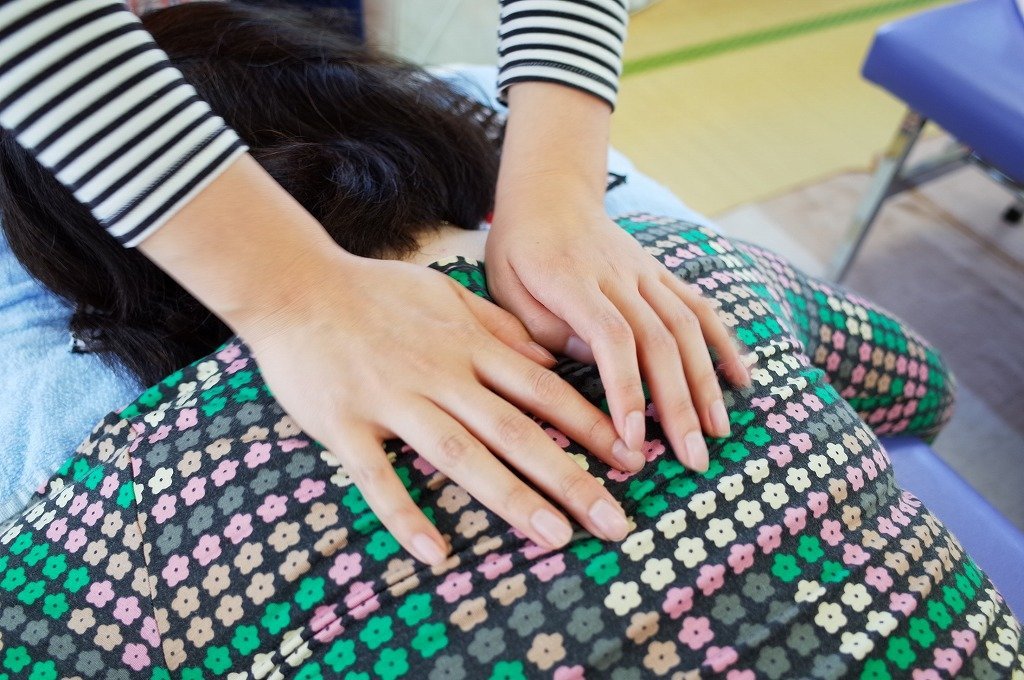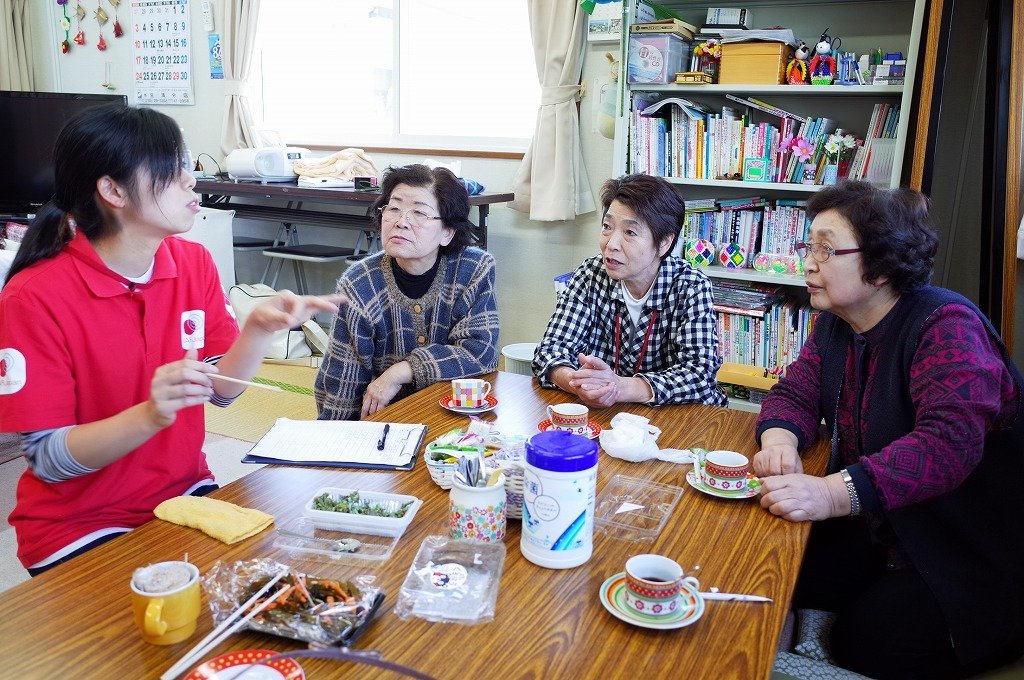By Atsushi Naoe | Project Leader
AAR Japan visited the temporary housing complex in Ofunato City (Iwate Prefecture), a city along the Sanriku Coast. A major tsunami engulfed Ofunato City and more than 3,000 families lost their homes. Although efforts are being made to rebuild residential land, there have been delays in the construction of public restoration apartments. As of April 2016, there are still 35 temporary housing complexes in this city that host 863 displaced households. This month, AAR Japan visited a temporary housing complex built on the ground of a public ballpark that hosts 72 displaced households.
Massages can relieve muscle tension and create a sense of connectedness through therapeutic touch. Even the residents who initially looked nervous were able to relax after a massage session and lingered, sipping on freshly brewed coffee and exchanging friendly conversations with AAR Japan staff and other residents who were also waiting for a massage. There was a resident eagerly awaiting for our arrival. She had prepared homemade marinated mountain vegetables (sansai). “Mountain vegetable picking is so much fun during this season. I always pick more than I can eat, so I preserve them by marinating them. I hope you enjoy eating them,” said the resident.
Each unit in the temporary housing complexes is so small that when residents lie flat on the floor and extend their arms, they “can touch the walls of the unit”. The walls are so paper thin that residents can hear every little sound. During winter months, residents are troubled by mold that grows on walls resulting from condensation. Living in these temporary housing units for more than five years is undesirable. However, the residents do not show their frustration but visit massage sessions and have friendly conversations about the coming of spring and mountain vegetable picking. Although our capacities are so limited that we cannot drastically improve their lives, our success can be measured by the smiles on their faces.
It has been over five years since the Great East Japan Earthquake. There are still over 170,000 displaced persons in Japan (primarily in Iwate, Miyagi and Fukushima prefectures) who are forced to live in temporary housing complexes. Construction of public housing, planning of collective relocation of survivors who remain at risk of potential disasters and development of residential land are underway in various affected areas, but these projects are far from completion. AAR Japan remains committed to supporting those affected by the Great East Japan Earthquake.
Project reports on GlobalGiving are posted directly to globalgiving.org by Project Leaders as they are completed, generally every 3-4 months. To protect the integrity of these documents, GlobalGiving does not alter them; therefore you may find some language or formatting issues.
If you donate to this project or have donated to this project, you can receive an email when this project posts a report. You can also subscribe for reports without donating.


